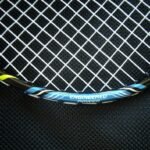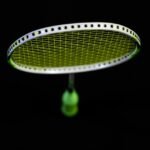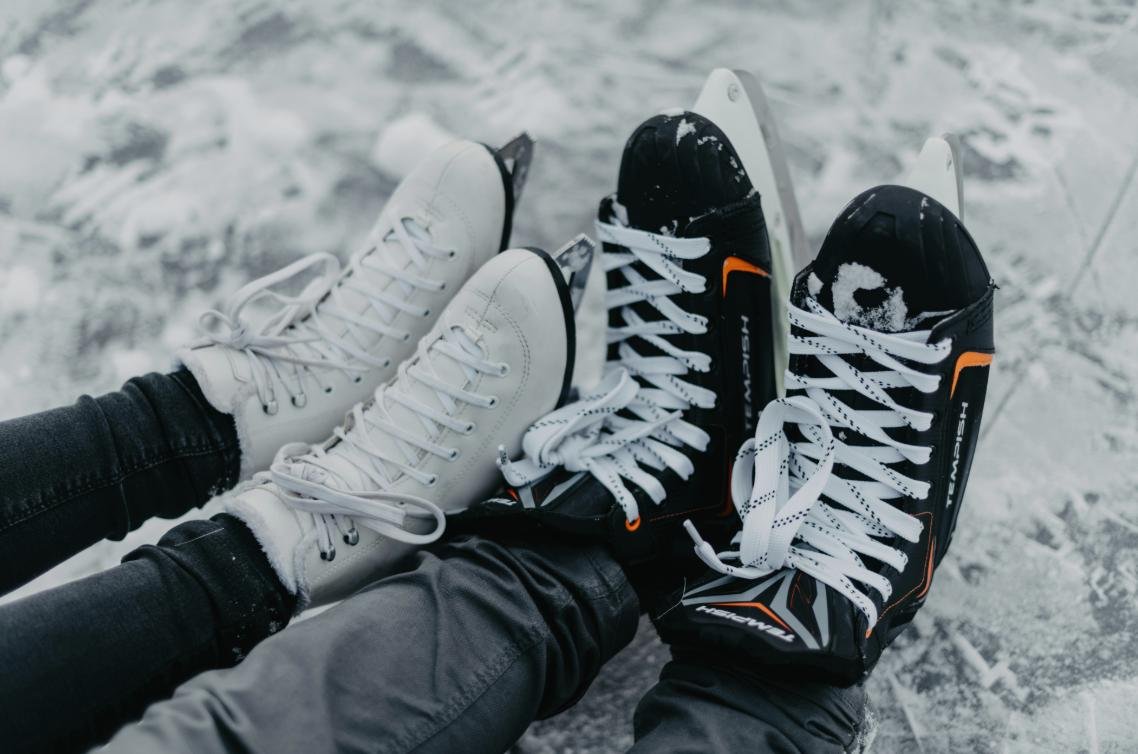Introduction to Youth Hockey Skates
The selection of the right youth hockey skates is a critical factor for young players, particularly those in the beginner and intermediate stages of their hockey journey. Choosing high-quality skates can significantly affect a player’s performance on the ice, influencing their ability to skate efficiently, maneuver effectively, and maintain balance during gameplay. Skates that fit properly can prevent injuries and discomfort, thereby enhancing the overall enjoyment of the sport.
Young athletes are still developing both physically and technically, which makes the choice of skates even more crucial. Skates designed specifically for youth often consider the unique anatomical features of younger players, providing the necessary support and flexibility. The right pair of skates ensures that players can focus on improving their skills rather than being distracted by pain or discomfort from ill-fitting footwear.
Additionally, the design of youth hockey skates has evolved to include features that cater specifically to the needs of younger players, such as lighter materials and adjustable sizing. These advancements allow for better performance while accommodating growth spurts, which is common among children. The right skates bolster confidence, allowing young athletes to explore and enjoy the sport freely, promoting long-term participation in hockey.
With the emphasis on comfort and support, young players can better engage in training and games, effectively enhancing their overall experience in hockey. As the connection between proper skates and performance becomes clearer, the importance of this selection process cannot be overstated. Thus, parents and guardians must pay careful attention to the aspects of youth hockey skates to ensure their young athletes have every opportunity to thrive both on and off the ice.
Understanding Skate Fit and Sizing
When it comes to selecting youth hockey skates, understanding the importance of proper fit and sizing is crucial for both performance and safety. A well-fitted skate can significantly enhance a player’s skating ability, while an improper fit may lead to discomfort or even injury. Accurate measurement of foot size is the first step in this process; it is recommended to measure feet at the end of the day when they are slightly swollen to ensure a more precise fitting. Use a soft ruler or a Brannock device, which offers a trustworthy way to gauge foot length and width.
Hockey skates often employ different sizing systems compared to regular shoes, so familiarity with these variations is essential. For instance, most hockey skate brands use a numeric sizing system that typically ranges from size 1 to 14, and half sizes are often available. Additionally, the width of the skate is paramount and can affect comfort and performance. Widths usually range from D (standard) to EE (wide), catering to various foot types.
Another element to take into account is the “breaking in” period of hockey skates. Skates should feel snug initially, but they should not cause excessive discomfort. Ideally, a properly fitting skate will feel secure yet allow a full range of motion. The right fit helps facilitate better balance and control on ice, allowing players to perform optimally. Moreover, a snug fit mitigates the risk of injuries such as blisters, black toenails, or stress fractures, which can occur when skates are too loose. Consequently, time spent on choosing the right youth hockey skates will lead to both enhanced performance and a more enjoyable skating experience.
Materials and Construction of Hockey Skates
When selecting youth hockey skates, it is crucial to understand the various materials and constructions that contribute to their overall performance. The materials used in hockey skates can significantly impact factors such as weight, durability, and the overall experience on the ice. Typically, hockey skates are constructed from a combination of synthetic materials, with high-quality options offering the best balance between performance and comfort.
The outer shell of hockey skates is often made from reinforced materials, such as nylon or composite blends. These materials provide a lightweight structure while ensuring durability to withstand the rigors of the game. Skates with a stiff outer shell promote better energy transfer between the skater and the ice, enhancing speed and agility. In contrast, softer materials may provide increased comfort but can compromise performance and longevity.
The boot cuff material is yet another essential element to consider. Boots designed with a good stiffness rating offer improved ankle support and stability when executing turns and stops. Moreover, quality insulation materials contribute to maintaining warmth and comfort during play. The interior lining is equally important; moisture-wicking liners help keep feet dry, reducing the risk of blisters and other injuries typically experienced during extended skating sessions.
Certain brands emphasize craftsmanship, ensuring that seams and closures are securely constructed to minimize wear over time. Investing in well-crafted skates typically results in enhanced durability, promoting a longer lifespan, especially vital for young athletes who are prone to growth spurts. Overall, selecting youth hockey skates that utilize high-quality materials and durable construction is fundamental for boosting performance and ensuring the comfort of young skaters through their development in the sport.
Blade and Holder Quality
When selecting youth hockey skates, the quality of the blades and holders is a critical factor that directly influences a player’s performance on the ice. The skate blade plays a significant role in determining skating agility and speed. Blades are typically made of high-carbon steel, which offers durability and edge retention. It is essential to look for blades that are precisely tempered and provide optimal sharpness; this ensures that young athletes can perform quick turns and crossovers effectively.
Moreover, the type of blade that is chosen can affect the overall feel of the skate. For instance, a less robust blade might hinder a player’s ability to accelerate quickly, while a high-quality blade enhances their speed and responsiveness on the ice. Blades are also available in various profiles, which can significantly modify a skater’s performance. A lower profile blade may provide better control, while a higher profile can contribute to increased speed. Therefore, examining the blade curvature and rocker is essential when choosing skates for young players.
The holder, which connects the blade to the boot, is equally important. A well-constructed holder contributes to the skate’s stability and control on the ice. High-quality holders are designed to provide a secure fit for the blade, minimizing any risk of slippage during aggressive maneuvers. Additionally, some holders offer a quick-release feature that allows for easy blade changes. Parents should look for fully integrated and durable holders that can withstand the rigors of youth hockey.
In conclusion, choosing youth hockey skates necessitates careful consideration of the blade and holder quality. The right combination not only aids in skill development but also enhances safety, ensuring a more enjoyable experience for young hockey players.
Support, Ankle Stability, and Boot Design
When selecting youth hockey skates, several critical factors come into play, particularly regarding the design of the boot. The support offered by the skate and the stability for the ankle are paramount for young players, as these elements greatly influence their performance and safety on the ice. Boot design not only affects the comfort levels of the skates but also impacts the ability to skate efficiently.
The height of the skate—a defining characteristic of the boot design—plays a significant role in ankle stability. Many skates are available in various cut heights, such as low-cut, mid-cut, and high-cut. Low-cut skates are generally lighter and offer more freedom of movement, making them suitable for players who value agility and quick turns. However, they may compromise the support needed for developing ankles. Conversely, high-cut skates provide comprehensive ankle support, essential for maintaining proper form and control, particularly for beginners. The trade-off, however, is that they may limit mobility, which can hinder a player’s transition between strides.
The choice of materials in skate construction also affects overall support and comfort. Stiffer materials usually offer enhanced support but may require longer break-in periods, while softer materials conform to the foot more readily, improving comfort but potentially sacrificing stability. Players will often need to consider their playing style, position, and experience level when making their selection.
Ultimately, achieving the right balance between support and mobility is essential. Young hockey players need skates that not only secure their ankles effectively but also allow for the necessary range of motion during play. Careful consideration of these factors will help ensure that players can skate proficiently and safely while enjoying this dynamic sport.
Weight and Flexibility of Skates
The weight and flexibility of youth hockey skates are significant factors that can substantially influence a player’s performance on the ice. When selecting skates, a lighter option is often preferred as it enhances speed and agility. Youth players, who are still developing their skills, will find that lighter skates can provide a noticeable advantage during gameplay. The reduction in weight allows skaters to accelerate more quickly and maneuver in tight spaces with greater ease, thus improving their overall game performance.
Moreover, skates that are designed with an optimal balance of weight and structure allow young athletes to maintain their energy levels for extended periods. When skates are excessively heavy, they can contribute to fatigue, detracting from a player’s ability to engage fully in the game. Therefore, finding a pair of skates that is not only lightweight but also supportive is crucial for prolonging player performance during matches or practices.
Flexibility is another important quality to consider when choosing youth hockey skates. Skates with the right level of flexibility allow for natural movement, enabling athletes to skate efficiently and execute various maneuvers effectively. Too much rigidity in the skates can hinder a player’s ability to pivot and change directions, while skates that are too flexible may lack the necessary support and power transfer during skating strokes. Thus, it is essential to find skates that strike an appropriate balance between flexibility and support.
In summary, the weight and flexibility of youth hockey skates significantly affect a player’s overall performance, speed, and comfort on the ice. Selecting the right skates tailored to an individual’s needs will enhance their ability to navigate the rink and improve their skating skills.
Choosing the Right Level of Protection
The selection of youth hockey skates involves careful consideration of protective features. Ensuring that skates provide adequate protection is crucial for safeguarding young players from potential injuries on the ice. Youth hockey skates come equipped with a variety of protective elements that can considerably reduce the risk of impact-related injuries. Key features to evaluate include the level of padding, the materials used in construction, and specific impact protection technologies.
One of the most vital aspects of protection in hockey skates is the padding. High-density foam padding is commonly found in the boot of skates, which not only enhances comfort but also absorbs shocks during play. This is particularly important for youth players who may be prone to falls or collisions, as their bodies are still developing and may not withstand impacts as effectively as adult players. It is advisable to choose skates with adjustable or additional padding options that can accommodate growing feet and ensure a snug fit.
Moreover, the exterior materials of the skate contribute significantly to its protective capabilities. Many skates feature reinforced toe caps and ankle support, which offer increased resistance against impact. Emerging technologies, such as smart foam and composite materials, provide even greater protection against impacts. Selecting skates with these advanced materials can further enhance the safety of young players during games and practices.
In addition, it is essential to consider the level of protection offered by the skate tongue. A well-structured tongue that includes inner padding can shield the top of the foot from pucks or sticks that may strike during play. By focusing on these protective features, parents and guardians can help ensure that their young athletes remain safe and can concentrate on improving their skills without undue fear of injury.
Setting a Budget for Youth Hockey Skates
When selecting the right youth hockey skates, establishing a budget is a critical initial step. A well-defined budget plays an essential role in narrowing down options, ensuring that you find a pair of skates that delivers value without compromising quality. The price of youth hockey skates can vary significantly based on factors such as features, materials, and brand reputation. Typically, youth hockey skates can range from approximately $50 to $300, depending on the specifications and brand. This wide price range emphasizes the importance of understanding what you are willing to invest.
Entry-level skates, generally priced at the lower end, tend to be manufactured using less advanced materials and come with basic features. These options are suitable for beginners who participate in recreational play. As you move towards mid-range skates, around $100 to $200, you will find enhanced features such as better ankle support, lightweight construction, and improved blade quality. Such skates are ideal for more serious young players who demand better performance on the ice.
For advanced players or those who exhibit a significant commitment to the sport, high-end skates costing upwards of $200 might be justified. These skates are made from premium materials, often designed for comfort and responsiveness, thereby optimizing performance. However, it is important to consider that spending more does not always guarantee a better fit or experience. Prioritizing quality and fit is essential, regardless of the chosen price tier.
To enhance your budget planning, it is advisable to compare prices across different retailers, look for sales, or consider second-hand options. By setting a realistic budget and conducting thorough research, you can find youth hockey skates that meet your child’s needs without stretching financial limits. The goal is to strike a balance between quality, performance, and affordability, ensuring your investment in youth hockey skates pays off on the ice.
Final Tips and Recommendations
Choosing the right youth hockey skates is paramount for a young athlete’s performance and safety on the ice. Throughout this discussion, we have emphasized several essential factors that play a critical role in making an informed decision. First and foremost, understanding the importance of fit cannot be overstated. Youth hockey skates should feel snug yet comfortable, allowing for adequate support while enabling freedom of movement. It is advisable to try on different brands and models, as sizing may vary, ensuring that the skates provide the necessary heel lock and forefoot comfort.
Moreover, considering the skill level and playing frequency of the young player is crucial. Beginners may opt for entry-level skates that prioritize comfort and support, while more experienced players might look for performance-oriented options that enhance agility and speed. Regardless of skill level, proper blade profile and material should also be assessed. Choosing quality materials will ensure not only the longevity of the skates but also improved performance on the ice.
Additionally, consulting with knowledgeable retailers can significantly aid in selecting the appropriate pair. Experienced staff can provide valuable insights into the latest technologies and trends in youth hockey skates, helping to tailor choices to individual needs. Parents and players should not hesitate to ask questions regarding maintenance, sizing, and performance attributes. Ultimately, investing time and effort into selecting the right pair of youth hockey skates will positively impact the player’s enjoyment and performance in the sport. Always remember, a well-fitted skate is key to unlocking the full potential of young hockey players as they grow in their skills and love for the game.






